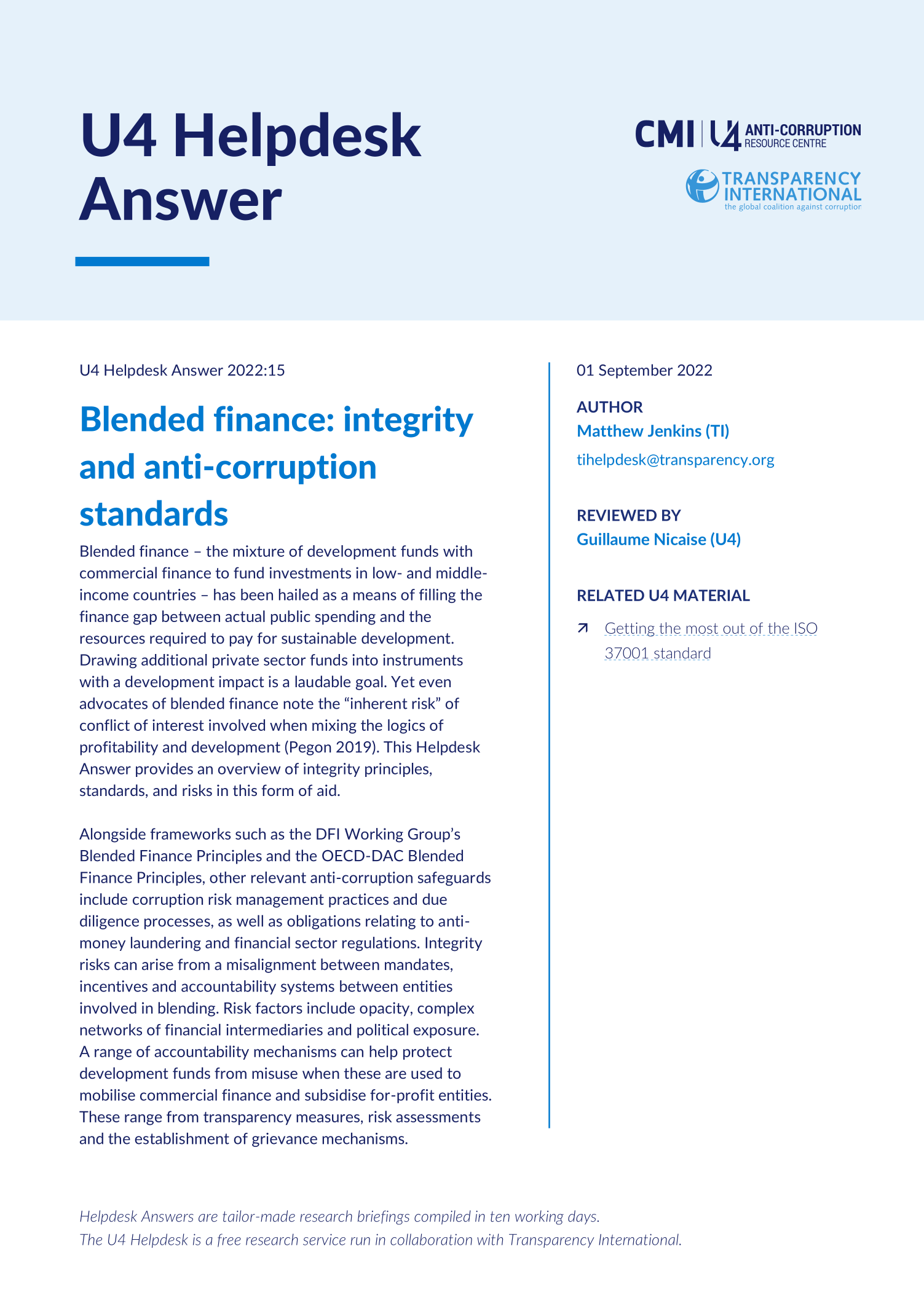Main points
- The participation of profit-driven actors in development work entails potentially novel integrity risks, while the complex financing arrangements and multi-layered governance structures involved in blended finance projects make managing transactions and monitoring results difficult.
- Core principles for the use of blended finance have been established by development finance institutions and the OECD-DAC group.
- Blended finance practitioners can draw on standards from both the public sector (such as aid effectiveness principles, corruption risk management practices and due diligence) and private sector measures (including anti-money laundering and financial sector regulations).
- Corruption risk factors in blended finance instruments relate chiefly to widespread opacity, particularly with regard to financial intermediaries. In practice, blended finance projects are considerably less transparent than projects funded using other forms of official development assistance (ITUC 2016: 45).
- Other integrity risks include the use of offshore financial centres, tied aid, lack of consultation with affected communities and misaligned incentives between the players involved. Where private sector entities manage concessional resources provided by public actors, conflicts of interest can be “particularly acute” (Pegon 2019).
- Relevant accountability mechanisms include greater disclosure of project level data, robust risk assessments, stringent due diligence, grievance mechanisms and competitive procurement processes.

